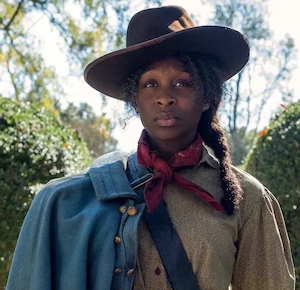By THE FINAL CALL

Before its release, the movie “Harriet” faced controversy and challenge. Some complained they were tired of slave movies. Others condemned having a Black British woman play the lead character. Later critics blasted what they called using a fictitious Black brute of a slave catcher as the villain and a White slave master as Harriet’s saviour.
Some of the passion and even complaints based on the film about the life of freedom fighter Harriet Tubman is understandable. Still, much of it is misplaced. Few movies show Black resistance to slavery. “Harriet” displays resistance, Blacks saving themselves and Black solidarity in the fight for freedom.
From a subversive Black preacher, who calls for obedience to slave masters by day and hides runaway slaves by night, to a young Black slave catcher who becomes an ally for Harriet, to free Blacks devoted breaking all shackles and slaves who refuse to betray their Moses, there is unity against the demonic institution of slavery.
The movie is a drama, not a documentary. It takes liberties and creates characters to make the film interesting and cover the life of a Black heroine who lived some 91 years. The best way to determine what the film presents and represents is to see it for yourself. It was directed and written by Kasi Lemmons, a Black woman, and Gregory Allen Howard, a Black man.
The Black slave catcher, Bigger Long, is certainly a villain but not the main demon. That honor belongs to Harriet’s former slave master, Gideon, who kills the race traitor for disobeying his order to take Harriet alive. When Bigger Long fires at his property, Gideon kills him in an ultimate example of control of Black lives. Gideon plans to retrieve and destroy Harriet himself, he won’t leave that honor to a niggra. Harriet, who many see depicted almost as a superhero, boldly faces her ex-master. She shoots him in the hand, crippling him. She prophesies to him about a coming bloody war over slavery. God never intended for people to own people, she declares. She takes his horse and rides away, leaving her humiliated former owner holding a bloody stump of a hand, kneeling in the dirt. So much for the White saviour narrative.
Part of the problem is the group ADOS (American Descendants of Slaves) and its divisive, Black versus Black rhetoric. The group rejects any Pan African sentiment and wants Blacks in America to stand alone to receive any benefit, whether from reparations, racial progress or opportunity. Rather than demand more equality and opportunity, ADOS says whatever opportunity that comes should be given to American Blacks whose ancestors were slaves, and not include Blacks from Africa or the Caribbean.
And, there was an organized boycott of the movie.
An unmistakable part of the movie was Harriet’s unflinching faith and connection to God. A childhood injury left her with fainting spells and a unique link with the divine Supreme Being. At different times, she relies on that connection to guide her and stops until her God tells her to move. More than hearing voices or reading signs, Harriet’s God commands her to act and answers her prayer to kill Gideon’s father, who refused to honor the terms of a will that would have freed her and her family. She never cowers or grovels. Caught between slave catchers and the owner of a hellish Maryland plantation, she jumps to almost certain doom in a river. It’s freedom or death, she declares.
Harriet is about faith, struggle, freedom and sacrifice. It’s a noteworthy depiction of a fierce, fearless Black woman at a time when Blacks too often remain limited to roles of thugs, drug dealers, strippers and dregs of American society.
Harriet tells a different story, offers a different narrative and gives us something to be proud of. Yet the movie should only be a beginning. We should enjoy it and it should inspire us to learn more about the life and times of a woman named Moses.












